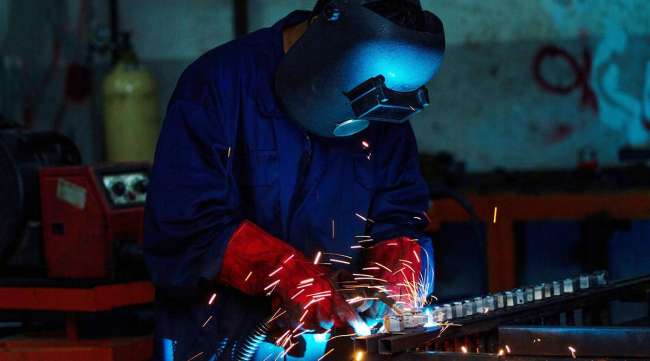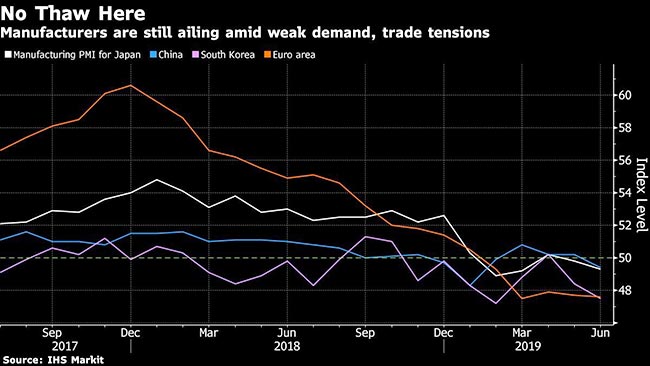Global Manufacturing Slump Puts Reality Check on Trade Truce

[Stay on top of transportation news: Get TTNews in your inbox.]
Global manufacturing took another knock at the end of the second quarter, signaling a worsening economic growth outlook as U.S.-China trade tensions continue to simmer.
Across Asia and Europe, factory activity shrank in June while a U.S. measure fell for a third month, according to reports July 1. China’s manufacturers saw sales, exports and production fall, while Germany suffered from weaker foreign demand. Exports from South Korea plunged almost 14%, and Japan’s Tankan confidence index dropped to a three-year low.
Even so, global stocks rallied as investors took their cue from a trade cease-fire announced by President Donald Trump and Chinese leader Xi Jinping at the Group of 20 meetings in Japan.
But broader gloom won’t be easy to dispel if the economic numbers continue to weaken. Morgan Stanley captured that view by downgrading its forecast for world growth, saying the truce wasn’t enough to remove the uncertainty around trade, which will weigh on the outlook.

For many, the situation is already poor enough — or soon will be — to force the world’s major central banks into action. Investors are pricing in a Federal Reserve interest-rate cut this month and Goldman Sachs says the European Central Bank will lower its deposit rate by 20 basis points and restart asset purchases in September.
“Focusing on trade, perhaps there’s been some easing in the tensions. But if we step back and look at the economic data, what do we see? Bad news from China, nasty news from the Tankan, and in South Korea another poor export number,” said Jane Foley, head of currency strategy at Rabobank. “All this is really quite worrying, it reasserts that picture of a slowdown in global growth.”
In the U.S., the Institute for Supply Management’s factory index fell to the lowest since October 2016, though the drop was smaller than analysts estimated. The IHS Markit gauge was better than a preliminary reading, but still near a decade low.
The weakness in the factory numbers from IHS Markit was widespread. Switzerland saw manufacturing shrink the most in seven years, and Spain, long the euro area’s outperformer, registered its worst reading since 2013. Overall euro-zone manufacturing shrank for a fifth month, with the “challenging economic environment” leading to another drop in orders.
In the U.K., the reading dropped to a six-year low. That’s partly an unwinding of Brexit stockpiling earlier in the year, but the report also showed a decline in business optimism.




